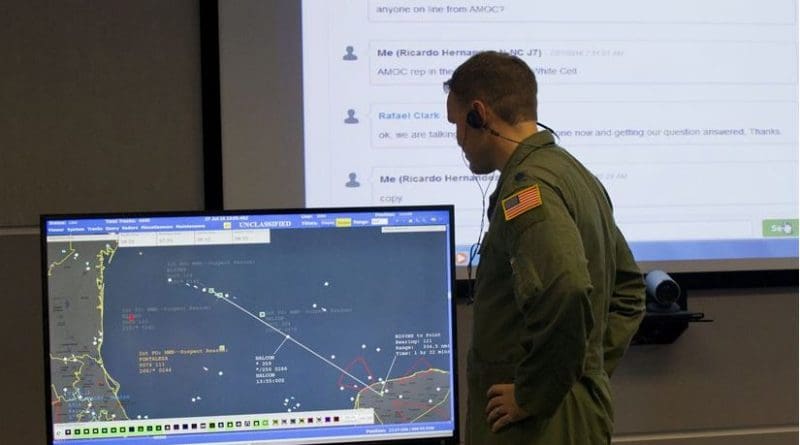NORAD, Northcom, Mexican Air Force Coordinate On Illicit-Flight Exercise
By DoD News
By Lisa Ferdinando
The early morning call came through the command center here near Peterson Air Force Base today: a simulated illicit flight was heading out of the United States to Mexico.
“We have at least two individuals on a watch list, with cash and weapons destined for Merida, Mexico,” the Transportation Security Administration representative at NORAD and U.S. Northern Command said on the call. “Aircraft is currently south of Corpus Christi, 10 miles heading south.”
The U.S. government monitored the flight over the skies of Texas, before handing off the tracking to Mexico as the flight entered Mexican airspace.
The live-fly event was part of Amalgam Eagle 16, a tactical exercise between the United States and Mexico, aimed at strengthening information sharing and response cooperation for real-life scenarios, North American Aerospace Defense Command and Northcom officials said.
US, Mexico Strengthen Cooperation, Partnership
In the command center, communications in English and Spanish wafted through the air, as U.S. officials and members of the Mexican air force tracked the movement of the illicit flight.
“Two minutes until interception,” according to the information coming in from Mexico in real time. And then a message later from the command center here: “Merida confirms [target of interest] landed at 1521Z.”
In the afternoon, the same plane headed back from Mexico to the United States, this time with Mexico monitoring the flight and then handing off the tracking to the United States.
Cooperation Critical in Complex Exercise
Participants were in federal agency locations in the United States and in command centers here and in Mexico City. U.S. agency participants included U.S. Customs and Border Protection, the Transportation Security Administration and the Federal Aviation Administration.
The simulated real-world scenario was complex and involved many moving parts, explained Joseph Bonnet, the director of joint training and exercises for NORAD and Northcom.
“Amalgam Eagle is important because it is a mechanism to build trust and mutual confidence for the United States and Mexico,” he said at the conclusion of today’s events.
“It also has served to improve our partner’s capacity and capabilities and broaden their participation across their interagency and whole of government,” Bonnet said, adding “that makes us all stronger.”
The exercise highlighted the importance of interagency cooperation, and intelligence sharing and coordination with partners in the defense of the homeland, Bonnet said. Mexico is an important partner in that mission, as is Canada, he noted.
Bonnet noted the Amalgam Eagle exercise, now in its third year, has grown each year, with Mexico taking responsibility for about half of the exercise this year.
A NORAD and Northcom official pointed out how interoperability of communications systems was key in the exercise, allowing the United States and Mexico to communicate in two languages.
Those systems are vital in exercises like this and in real-world scenarios, as those programs can be applied in a number of languages to allow for communications with other international partners, the official pointed out.
Protecting the Homeland
The exercise proved valuable experience in working with partners both in the United States and in Mexico, said Air Force Lt. Col. Chris Power, the deputy division chief of NORAD operations support.
“Mexico shares a border with the U.S., a very critical border, so it is important to us to keep up good relations with our partners to the south,” Power said.
He pointed out that during this exercise, Mexico used some new communication tools for the first time. It was a great opportunity to practice information sharing, he said.
“Personally, it is good to see that our Mexican partners are just as passionate about defending the homelands as we are, as well as our partner to the north in Canada,” he said.

